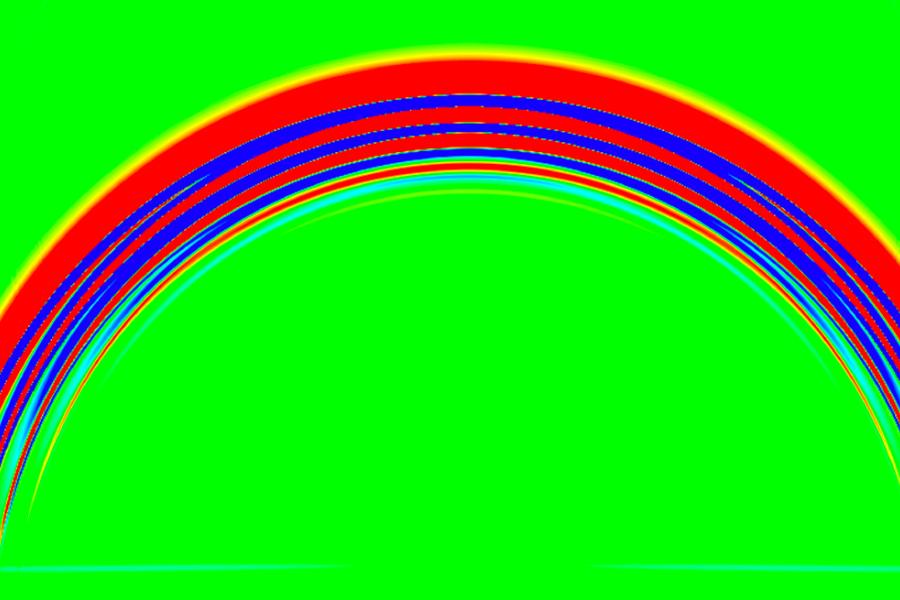- Name
- Roberto Molar Candanosa
- rmolarc1@jh.edu
- Office phone
- 443-997-0258
- Cell phone
- 443-938-1944
New simulations of two black holes colliding near the speed of light reveal the mysterious physics of what one astrophysicist calls "one of the most violent events you can imagine in the universe."
"It's a bit of a crazy thing to blast two black holes head-on very close to the speed of light," said Thomas Helfer, a postdoctoral fellow at Johns Hopkins University who produced the simulations. "The gravitational waves associated with the collision might look anticlimactic, but this is one of the most violent events you can imagine in the universe."
The work, which appears today in Physical Review Letters, is the first detailed look at the aftermath of such a cataclysmic clash, and shows how a remnant black hole would form and send gravitational waves through the cosmos.
Black hole mergers are one of the few events in the universe energetic enough to produce detectable gravitational waves, which carry energy produced by massive cosmic collisions. Like ripples in a pond, these waves flow through the universe distorting space and time. But unlike waves traveling through water, they are extremely tiny, and propagate through "spacetime," the mind-bending concept that combines the three dimensions of space with the idea of time.
"If a gravitational wave goes through me, it makes me a little thinner and a little taller, and then a little shorter and a little fatter," said co-author Emanuele Berti, a Johns Hopkins physicist. "But the amount by which it does that is about 100,000 times smaller than the size of an atomic nucleus."
Physicists have studied the waves emitted after black holes merge by simplifying general relativity—Einstein's theory of how gravity works—using equations that ignore subtle, but important, gravitational effects of the merger. Berti thinks that approach is biased because it relies on "linear approximations," the assumption that the gravitational waves produced during the merger are weak.
Although it is nearly impossible for black holes to collide at such extreme speeds, simulating such a crash produced signals strong enough for the team to detect nonlinearities, or gravitational effects that can't be found with the simplified version of the theory. The findings suggest black hole mergers cannot be studied with linearized equations and that current models of these events need to be tweaked, if not changed altogether.
"General relativity is nonlinear, which means that the gravitational waves themselves will also produce more gravitational waves," said Mark Ho-Yeuk Cheung, a Johns Hopkins doctoral physics student who led the research.
The team also spotted these so-called nonlinearities by analyzing simulations of two black holes merging after orbiting each other, a scenario that more realistically represents what happens in the universe. A study of the same simulations by an independent group of researchers at Caltech also appears in today's Physical Review Letters and finds similar results.
"It's kind of a big deal because we cannot forget about the complications if we really want to understand black holes," Cheung said. "Einstein's theory is a beast; the equations are really complicated."
The paper's authors include several other Johns Hopkins affilates: Vishal Baibhav of Northwestern University, and Kaze Wong of the Flatiron Institute, who both earned PhDs in physics from Johns Hopkins in 2021; and Roberto Cotesta, a postdoctoral fellow in the Department of Physics and Astronomy.
Posted in Science+Technology
Tagged black holes, physics and astronomy, gravitational waves








